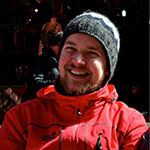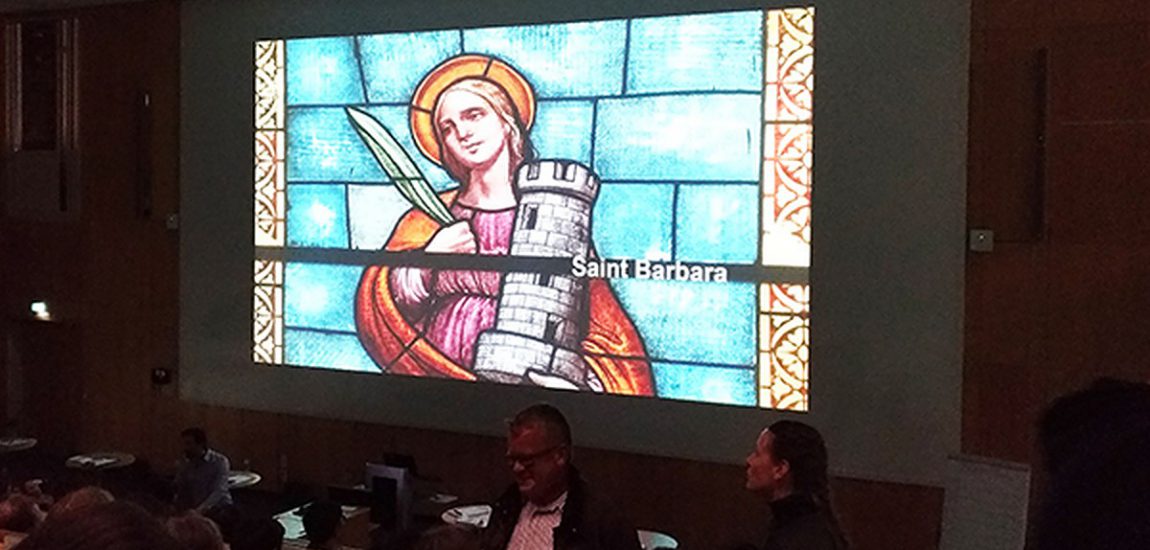
Small spots and big celebrations at the GFZ
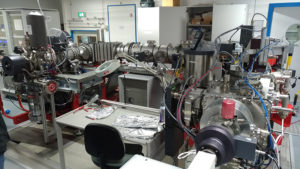
I recently had the opportunity to attend the SIMS short course at the GFZ (German Research Centre for Geosciences) in Potsdam with support of the EAG. The course was set to be held by Dr. Michael Wiedenbeck, however, due to unforeseeable circumstances, he could not attend the course. Instead, Dr. Alexander Rocholl and Dr. Robert Trumbull filled in in his stead. Although on short notice, both did a great job in giving us participants an understanding of the basic principles of SIMS and mass spectroscopy in general.
The course was divided into seven chapters. The first two chapters dealt with an overview on geochemical microanalysis and SIMS as a whole. Chapters 3 and 4 explored trace element and isotopic measurements using SIMS, detailing advantages and disadvantages of the method. In chapter 5, geochronology with a focus on U-Pb dating of zircon was discussed. The last two chapters dealt with depth profiling and ion imaging.
Lectures in the morning were usually followed by practical examples or visits to the laboratories in the afternoon. In the sample preparation lab (Fig. 1), they showed us all the steps from a rock to a finished zircon grain separate. We were also able to visit the SIMS instrument, a CAMECA IMS 1280HR (Fig. 2), where we could inspect the different parts that we learned about during the morning session. Further, we toured the other analytical instruments at the GFZ, e.g. the LA-ICP-MS, EMPA, and SEM laboratories.
The course was a good opportunity for me to learn about the principles and theoretical background of SIMS, its advantages over other methods, but also on its limitations and shortcomings, which have to be weighed against carefully, depending on the application. The very small analysing spots that can be achieved with a SIMS, as well as only very little ablation in comparison to a LA-ICP-MS gives more control on what to analyse. Sampling mass for a SIMS analysis is in the range of 10’s of ng, as compared to 100 ng for a typical LA-ICP-MS analysis spot. This could be useful for some of my future research, as I am working with zircon grains that have a complex growth history. Only the small analysing spots that a SIMS offers can resolve the different growth zones in sufficient detail and without mixing the different domains.
With participants from all over the world (Brazil, Canada, China, the Czech Republic, Germany, Hungary, Poland, Sweden, Switzerland and Austria) interesting conversations could develop in the evenings after the course. As is tradition in most geoscience institutes in Europe, a celebration in honour of Saint Barbara, the patron saint of miners and geologists, was also held at the GFZ (Fig. 3). Those who stayed a few days longer were able to attend a second Barbara celebration at the University of Potsdam. Organized by the students there, they had a band playing geology-themed songs and hosted the “Geolympics” with different disciplines (e.g. “Hammer Holding” pictured in Fig. 4). In a very exciting photo finish, a team from the University of Mainz (who also participated in the SIMS course) could decide the Geolympics for themselves and won the golden Barbara.
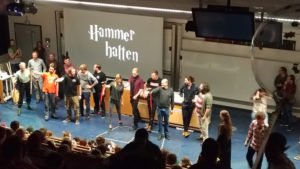
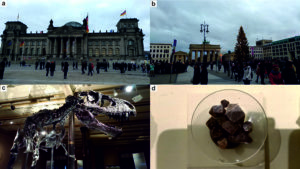
As it was my first time in the northern part of Germany, I used my last day for some sightseeing in Berlin (Fig. 5). Of course I had to visit the Natural History Museum with their nice mineralogical and palaeontological collections.
All in all, the SIMS course in Potsdam was really beneficial. I have learned a lot about the technique itself and had some inspiring discussions with the other course participants. It also sparked some new ideas for my current and upcoming research. I would recommend this course for anyone who is interested in geochemical microanalysis, especially when very small analysing spots are required.
About the author
Martin Lindner is a PhD student in the working group of Prof. Finger at the University of Salzburg and recipient of a DOC Fellowship of the Austrian Academy of Sciences. His research focuses on the petrogenesis of granodioritic rocks of the Bohemian Massif. He applies whole rock geochemistry as well as U-Pb dating and trace element analysis of zircons for his studies.
